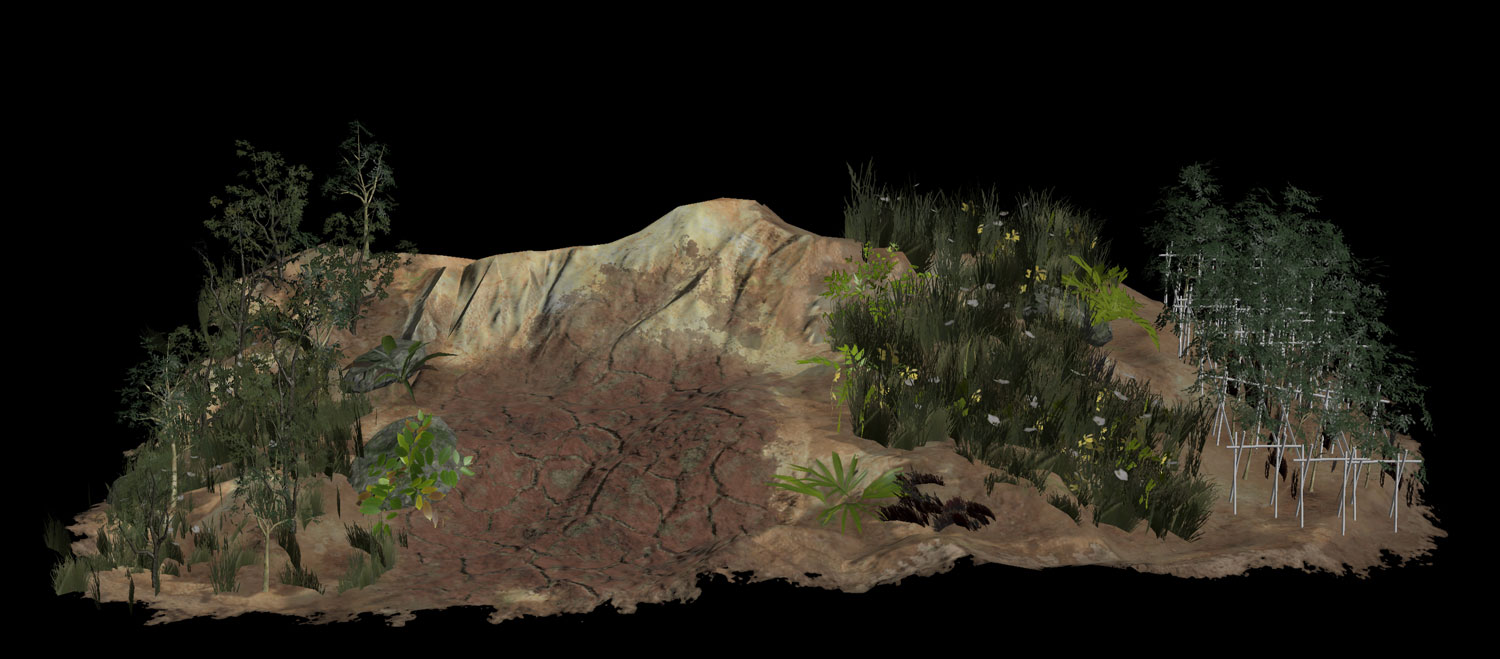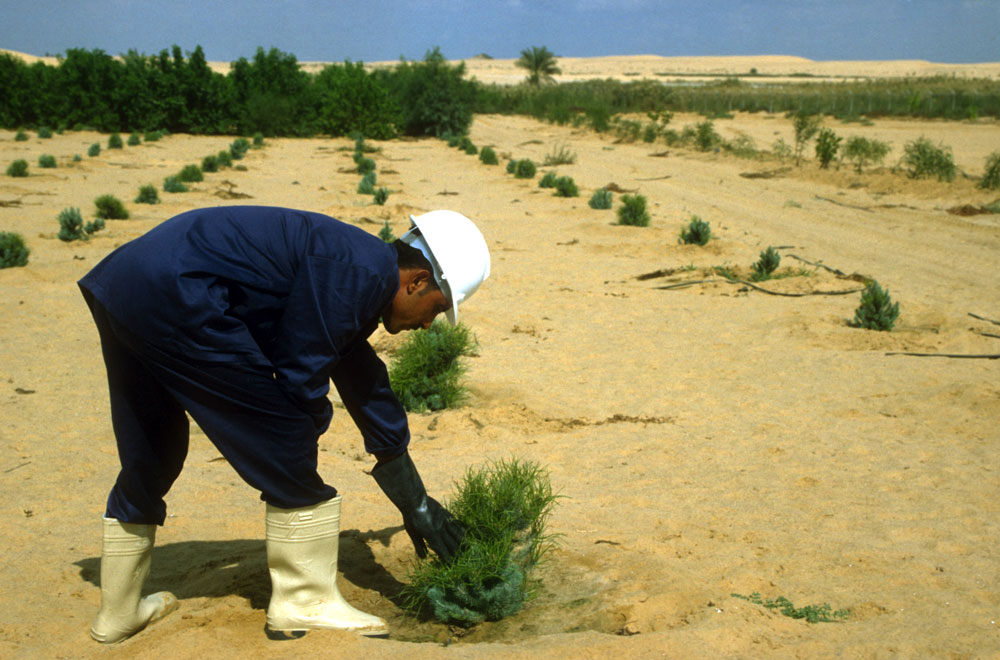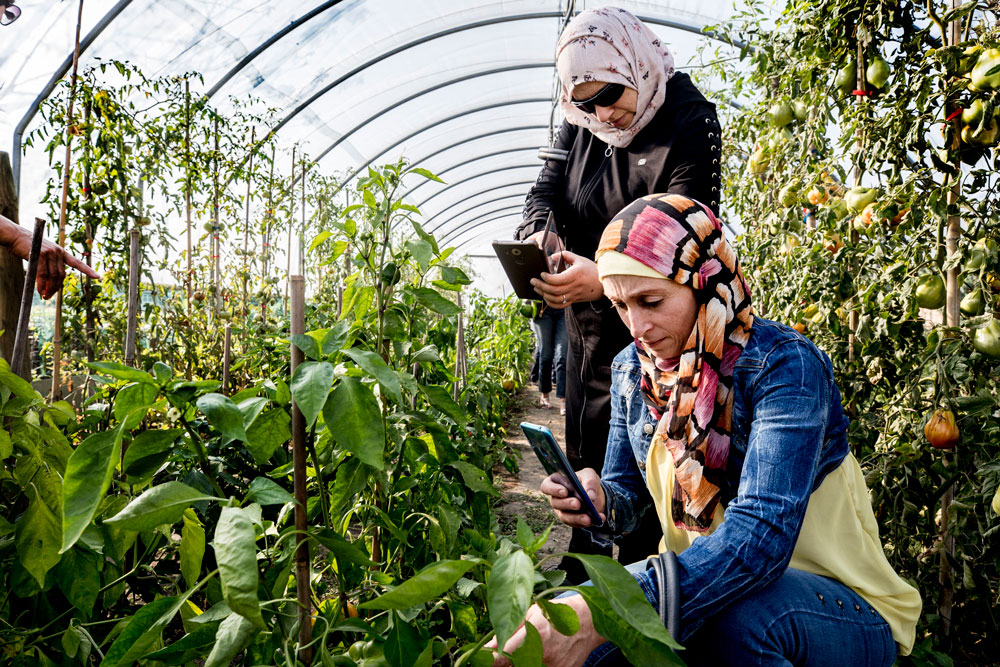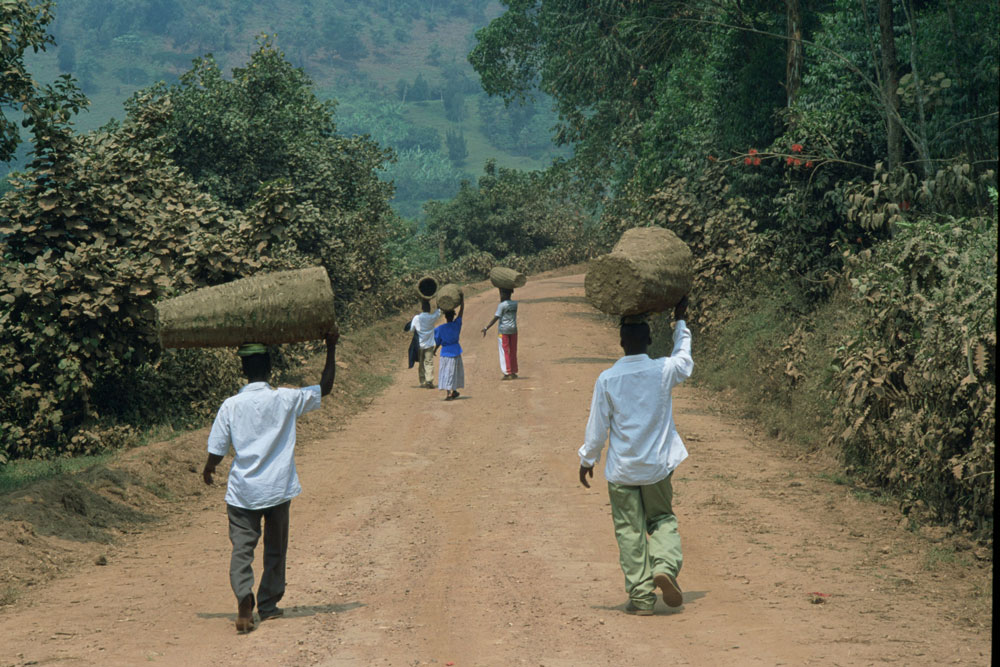
- Hyperarid
- Arid
- Semiarid
- Dry Subhumid
- Presumed drylands
- Non drylands
SOURCE: UNEP-WCMC, 2007
Drylands are a vital but often overlooked resource.
Those that live in drylands depend on forests and other wooded lands, and grasslands for their livelihoods and to meet basic needs.
Trees and forests in drylands also provide habitats for biodiversity, protect against erosion and desertification, and help increase the resilience of landscapes and communities in the face of global change.
Of all the Earth’s land surface, drylands cover about:
The number of people estimated to be living in drylands:
However, these ecosystems are vulnerable to water shortage, drought, desertification, land-use change and degradation, and climate change impacts, with dangerous ramifications for the food security, livelihood and well-being of their populations.
Urgent action is needed to improve the management and restoration of drylands to achieve land degradation neutrality.
The report - the first of its kind –provides a baseline for future monitoring and will support countries in their efforts to identify appropriate investments for the restoration and sustainable management of drylands.

The assessment results demonstrate that drylands are not wastelands, but productive landscapes with considerable economic potential and environmental value. They highlight the importance of investing in forest and woodland resources in drylands, including trees outside of forests.
The findings can be used as a baseline to highlight key emerging threats to drylands and their populations at the global and regional levels, including climate change, biodiversity and food security challenges. They can thus assist in prioritizing and targeting the investments needed for dryland restoration.
The assessment should be a step towards regular monitoring of changes in dry landscapes, which is vital to evaluate the impact of climate change and human activities, the results of adaptation and mitigation measures and progress towards meeting regional targets for land degradation neutrality.
Regular monitoring can further support assessment of the impact of different governance frameworks, policies and legislation related to land use, for more effective improvement of the livelihoods and climate change resilience of dryland populations.
When we take a closer look, what appears as a single landscape from above is revealed to be a rich ecosystem of forests, grasslands, and more.
This report was carried out through interpretation of freely available satellite images by more than 200 experts.
The analysis used Collect Earth, a tool in the Open Foris suite of free, open-source software tools developed by FAO in collaboration with Google.
The assessment draws on information from 213,782 sample plots located across the world’s drylands. It summarizes the distribution of forests, other wooded land and other land uses including grasslands, croplands, built-up areas and barren land. It also estimates tree canopy cover, shrub cover, forest type and presence of trees outside of forests.
Find out more about our methodologyDrylands are defined as lands where the ratio of annual precipitation and mean annual potential evapotranspiration, also known as the aridity index (AI), is no more than 0.65. The UNEP-WCMC map divides these lands into four aridity zones:
Hyperarid
Arid
Semi-arid
Dry subhumid
The least arid areas have the most forest. Forests account for 43 percent of land in the dry subhumid zone and 20 percent in the semi-arid zone, but occur rarely in the arid and hyperarid zones.
More than half of the world’s dryland forest (52 percent) is in the dry subhumid zone, mostly in the northeast of Southern Africa and western (pre-Andean) inland South America; 41 percent is in the semi-arid zone, compared with only 7 percent in the arid zone and less than 1 percent in the hyperarid zone.

SOURCE: UNEP-WCMC, 2007
SOURCE: UNEP-WCMC, 2007
Of the world’s 6.1 billion hectares of drylands, the assessment classified 18 percent as forest and 10 percent as other wooded land. The remaining 71 percent was classified as other land, comprising predominantly barren land, such as bare soil and rock (28 percent of total dryland area), grasslands (25 percent) and croplands (14 percent).
The distribution of land uses is highly dependent on aridity. In general, the proportion of other land decreases with decreasing aridity.
Other Land:
SOURCE: FAO 2019
SOURCE: FAO 2019
in focus
Main messages
The global drylands contain 1.1 billion hectares of forest, which is 27 percent of the global forest area, estimated at approximately 4 billion hectares.
Two-thirds of the dryland forest area has a closed canopy (canopy cover greater than 40 percent), and around 30 percent has canopy cover between 10 and 39 percent.
The least-arid zones have the most forests. The proportion of forest is 52 percent in the dry subhumid zone, 41 percent in the semi-arid zone, 7 percent in the arid zone and less than 1 percent in the hyperarid zone.
Trees are present on almost one-third of the world’s drylands (1.9 billion hectares, or 31 percent of the dryland area). An estimated 60 percent of built-up areas (41 million hectares) and 27 percent of cropland (228 million hectares) have at least some tree cover.
Drylands are not wastelands, but productive landscapes with considerable economic potential and environmental value.
The Sustainable Development Goals cannot be achieved without social and economic investment in drylands.
The Global Drylands Assessment can be used to support countries in developing strategies for the sustainable management of drylands, enabling decision-makers and planners to identify appropriate investments.
These might include, for example:

Urgent regreening measures for restoration and preservation of vulnerable and critically endangered natural resources threatened by severe degradation or desertification.

Measures for preventing the expansion of arid lands and the spread of invasive plant species to achieve land degradation neutrality.

Improvements in resource efficiency, including sustainable food systems that restore natural resources and sustain livelihoods.

Encouraging research on and investment in genetic resources that can contribute to adaptation to climate change and to critical conditions associated with drought, high temperatures, pests and diseases.

The recovery and valorization of local knowledge that can assist adaptation, for the benefit of society.
The assessment should be a step towards regular monitoring of changes in dry landscapes. Monitoring is vital to evaluate the impact of climate change and human activities, the results of adaptation and mitigation measures and progress towards meeting regional targets for land degradation neutrality. It can further support assessment of the impact of different governance frameworks, policies and legislation related to land use, for more effective improvement of the livelihoods and climate change resilience of dryland populations.